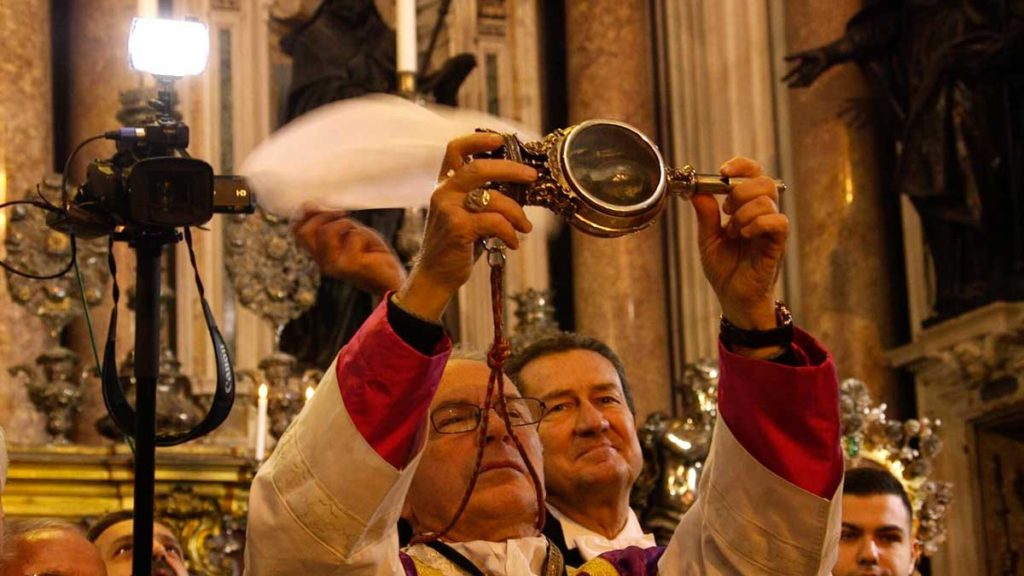Three times a year, St. Januarius renews his bond with Naples and his blood dissolves in front of thousands of citizens and worshippers. At least this is what Neapolitans hope. On the Saturday preceding the first Sunday of May, on 19 September and on 16 December, they flock to the cathedral to witness the miracle of the liquefaction.
The atmosphere is dense with expectation, in the first row the ‘parenti’ await the moment in which they must sing chants and invocations to the saint for the blood to return to its natural state, waiting for the cardinal to display the vial and the assistant to wave the handkerchief to announce the miracle.
They are elderly women, descendants of Eusebia, the nurse who collected St. Januarius’ blood. They are relatives, parenti in fact, bound to the saint by an ancestral familiarity, a blood bond, on such familiar terms as to call him ‘Yellow face’ or scold him when the miracle takes too long. They repeat archaic rituals which are rooted in the Greek origins of Naples, when the women mourned their dead young men, hoping to resuscitate them and renew the myth of the eternal return. For them St. Januarius is like a son.
.

Actually The cult of St. Januarius has always been popular, rooted in Neapolitan culture. Neapolitans have a relationship of equals with St. Januarius, and they show it with constant dialogue and confidentiality. St. Januarius, you fix it! is an invocation which is repeated in the face of personal worries, collective fears, natural events and disasters. St. Januarius, you know me, if you could just grant me this favour, says Massimo Troisi in one of his most famous sketches. Nino Manfredi invokes him in The Treasure of San Gennaro and the whole town prays to him, for they see in him a brother they can turn to in the case of need.
ORDINARY CELEBRATIONS
First Saturday in May
On the Saturday before the first Sunday in May, the bust and reliquary with the casket and the ampoules, together with the silver busts of the co-patron saints of Naples, are carried in procession from the Cathedral to the Basilica of Santa Chiara, in memory of the first transfer of the saint’s relics from Pozzuoli to Naples. After the ritual prayers, the “first miracle” of the liquefaction of the blood takes place.
19 September
The second, perhaps the best-known, ritual of the liquefaction of the blood, is on 19 September, the anniversary of the young bishop of Benevento’s beheading. Inside the Cathedral, in the presence of the cardinal, the civic authorities and the congregation, the miracle takes place after the ritual prayers
16 December
On 16 December, the day of the celebration of St. Januarius’ patronage, the “miracle” of the liquefaction of the blood is repeated in memory of the 1631 eruption of Vesuvius, when the blood liquefied and the magma flow stopped miraculously and did not invade the town.






